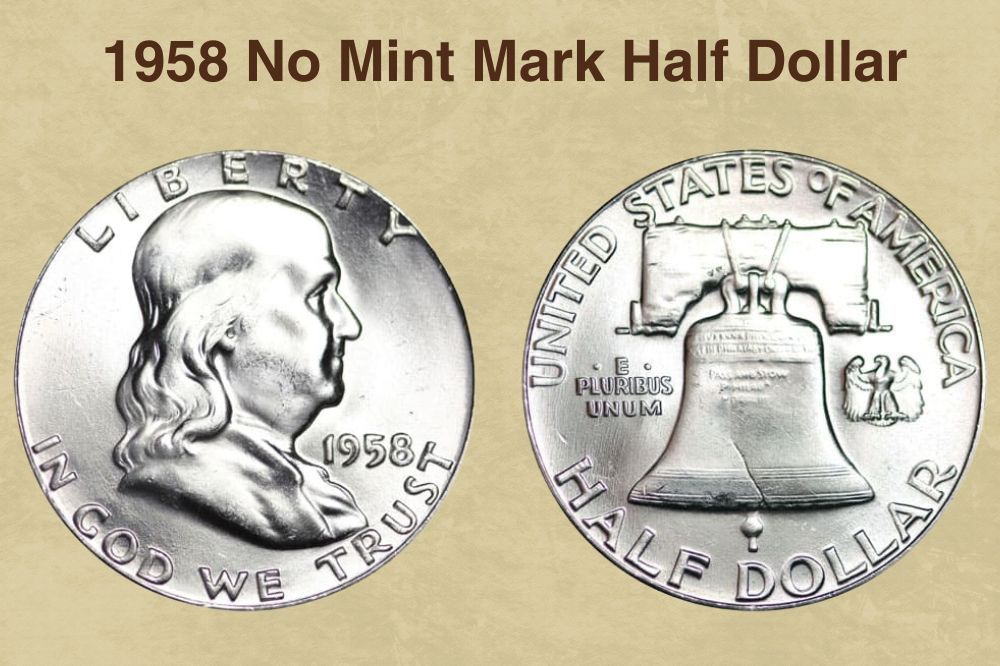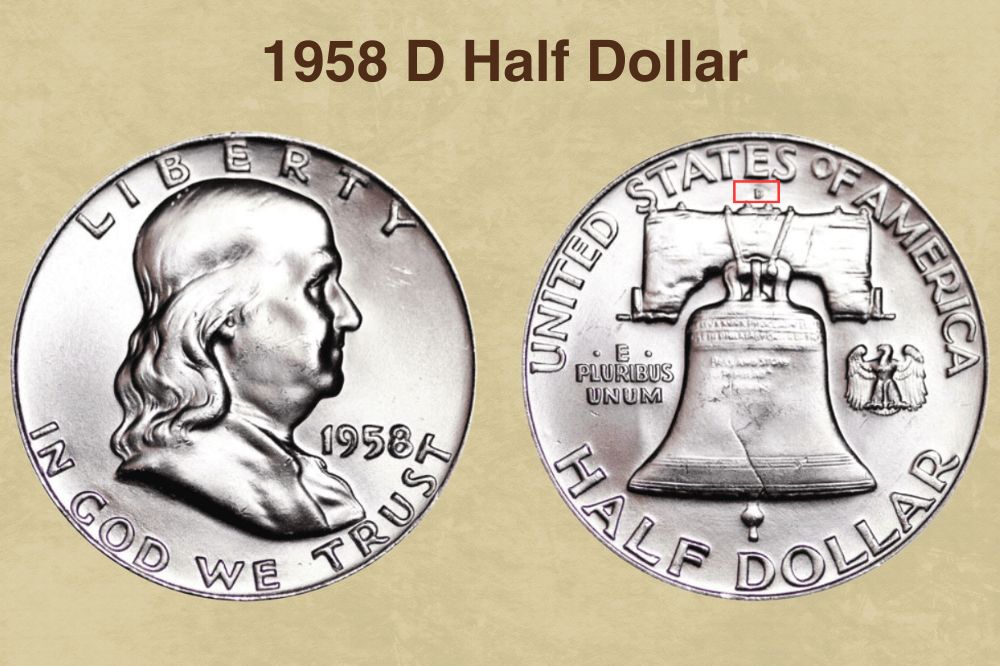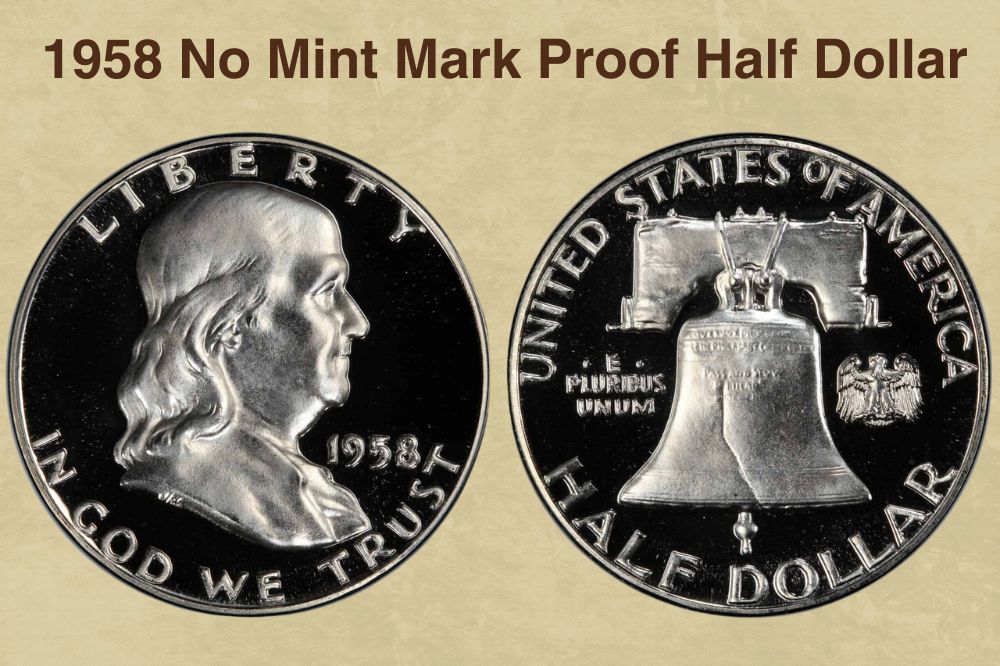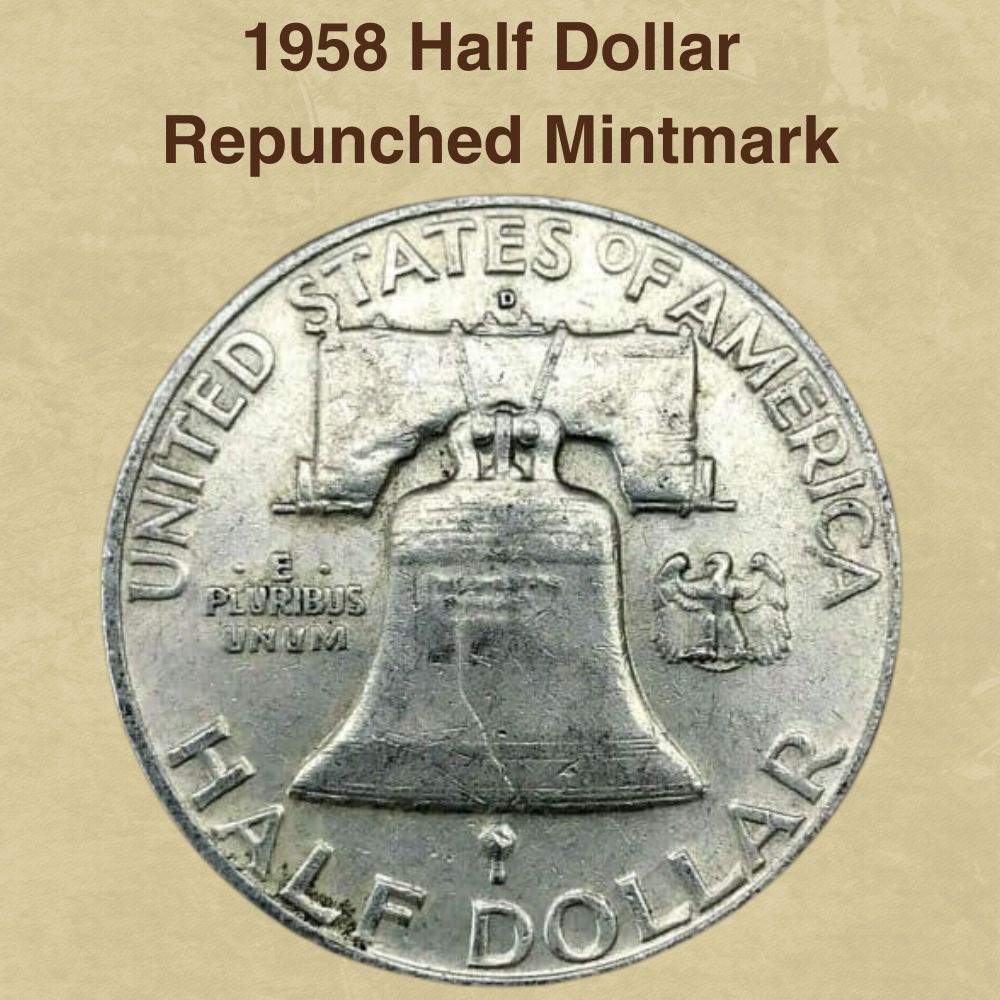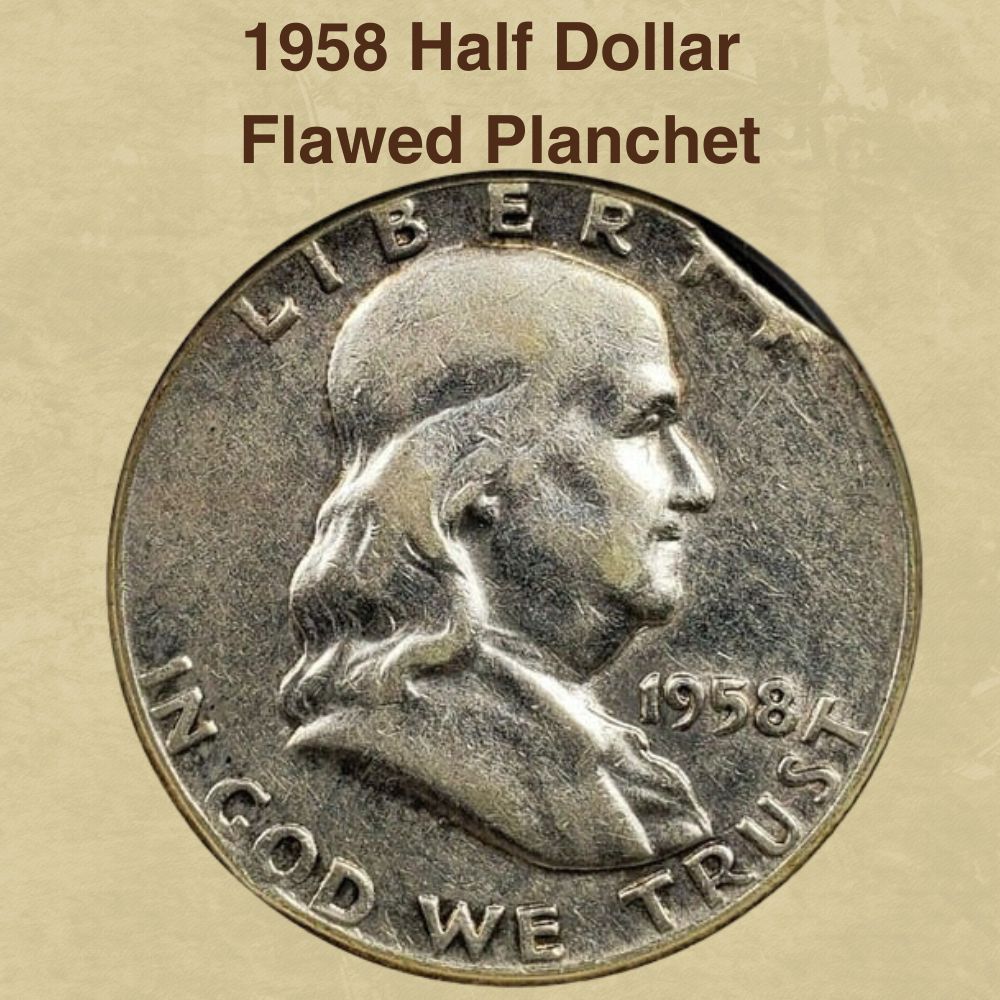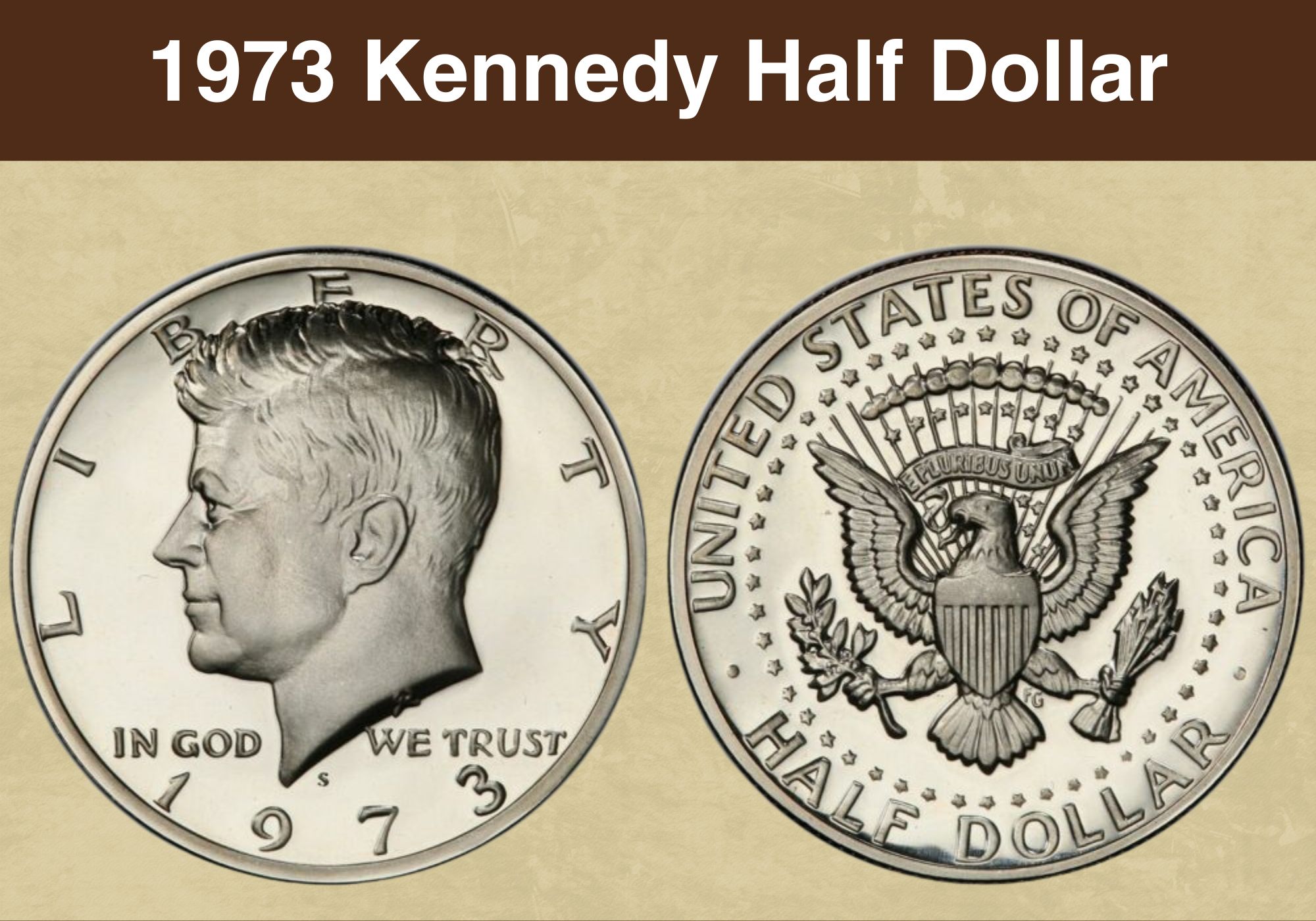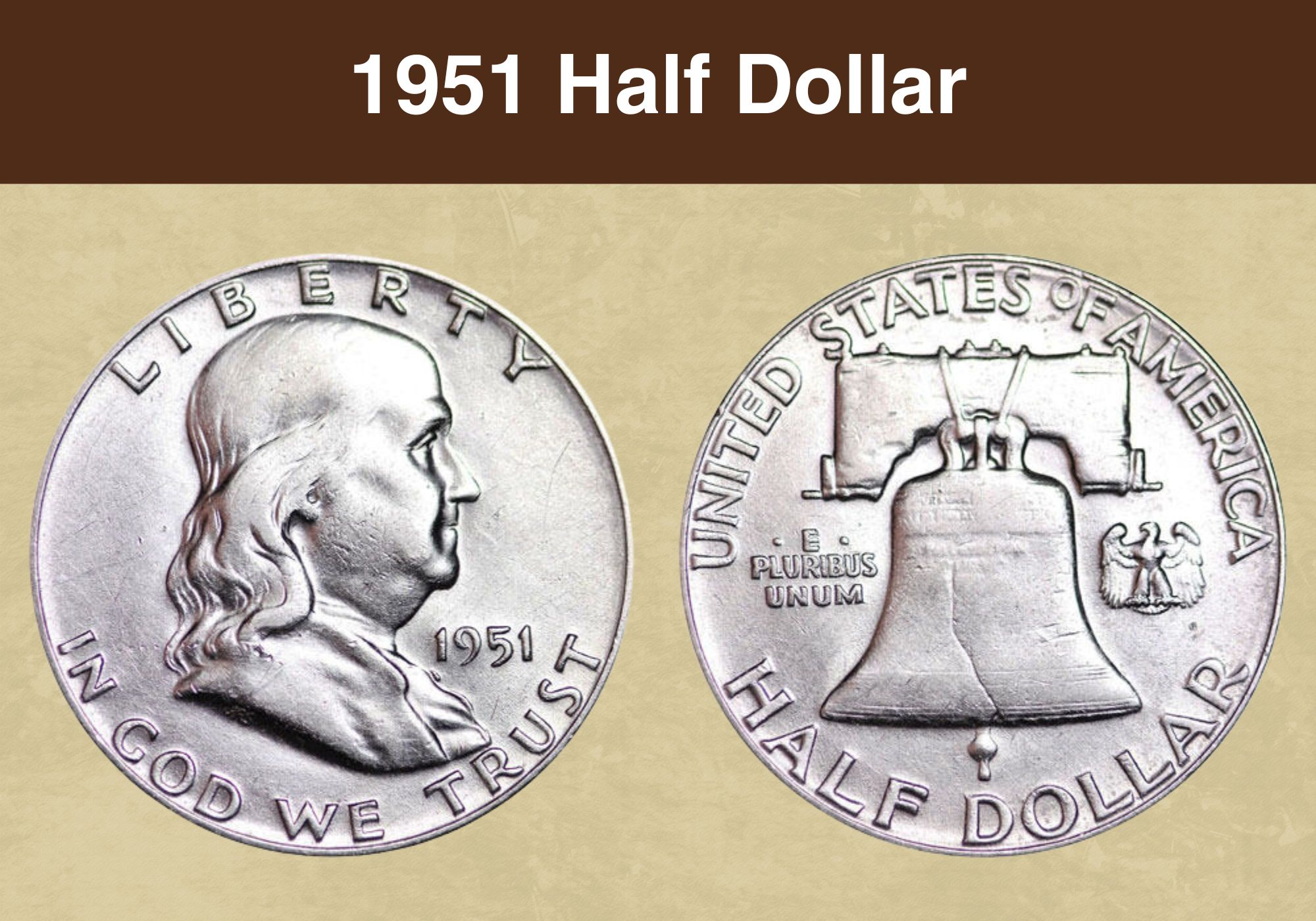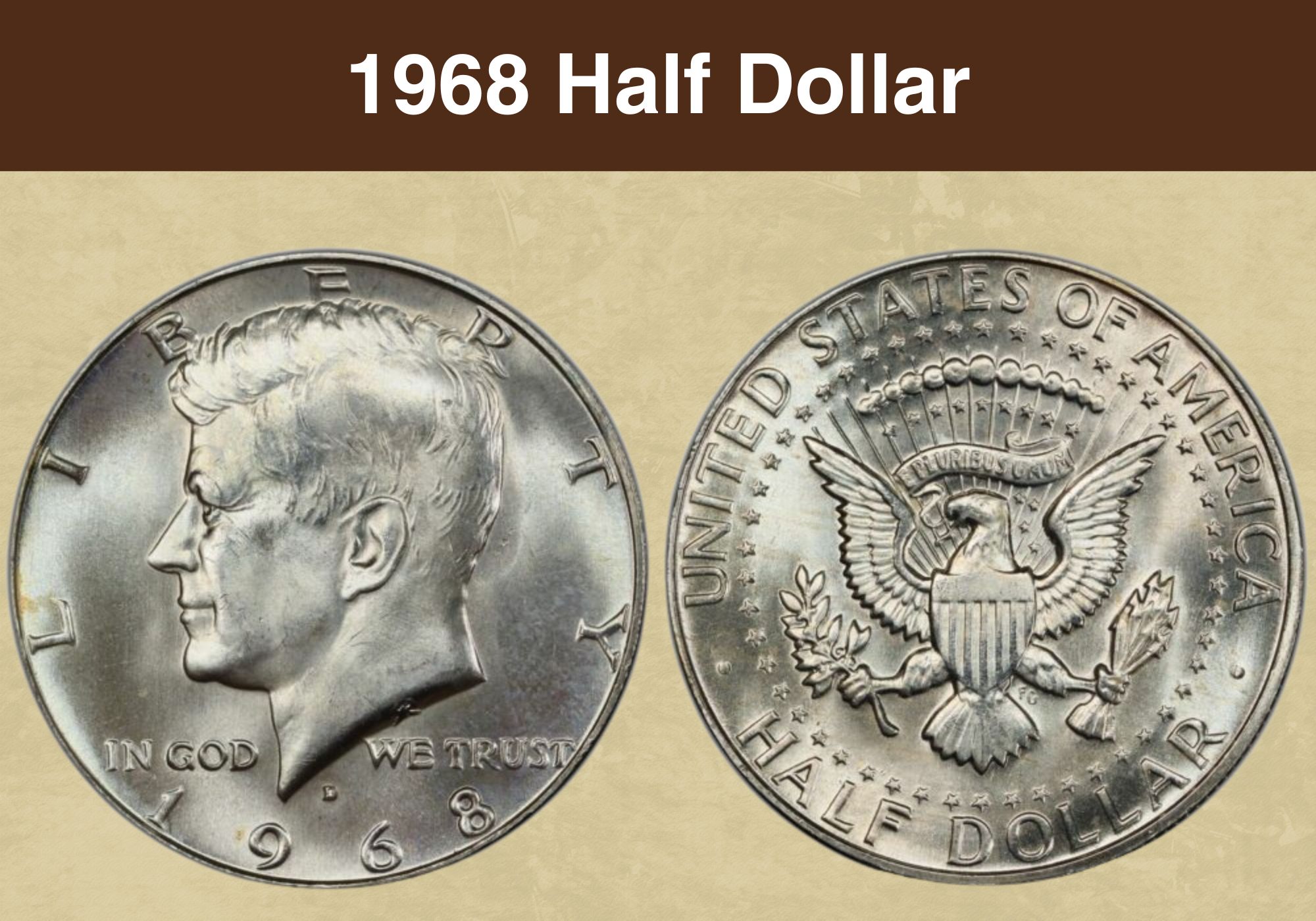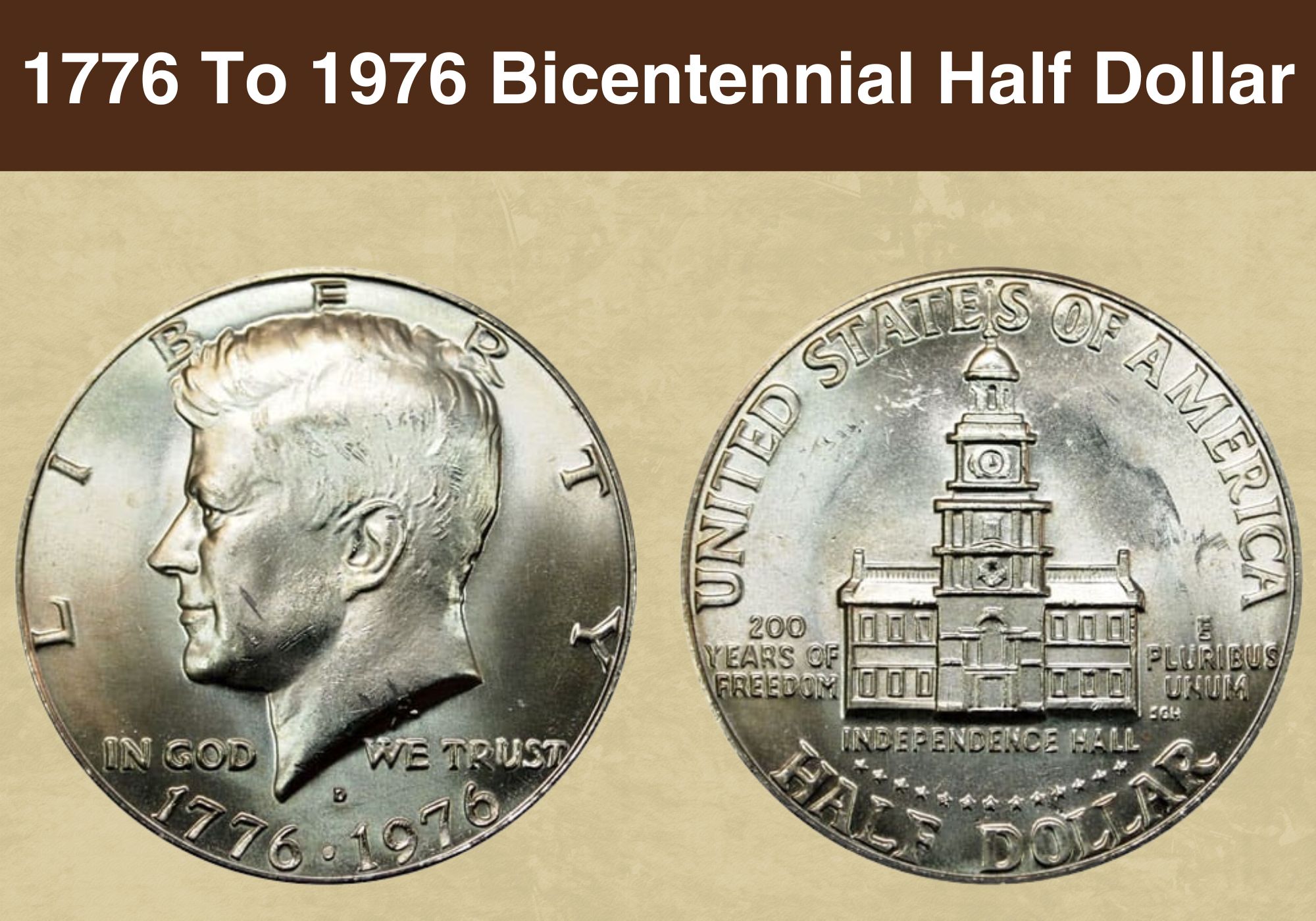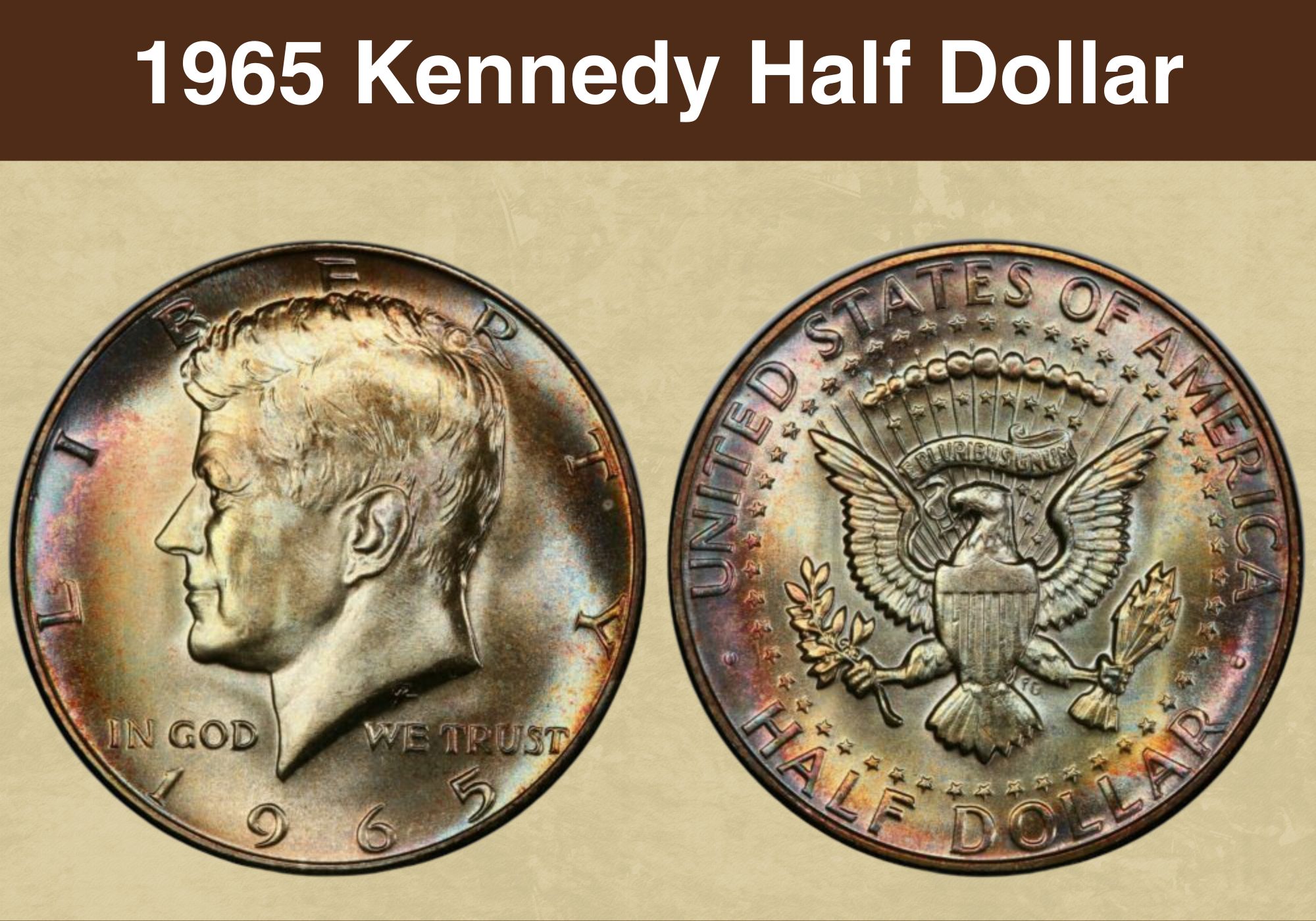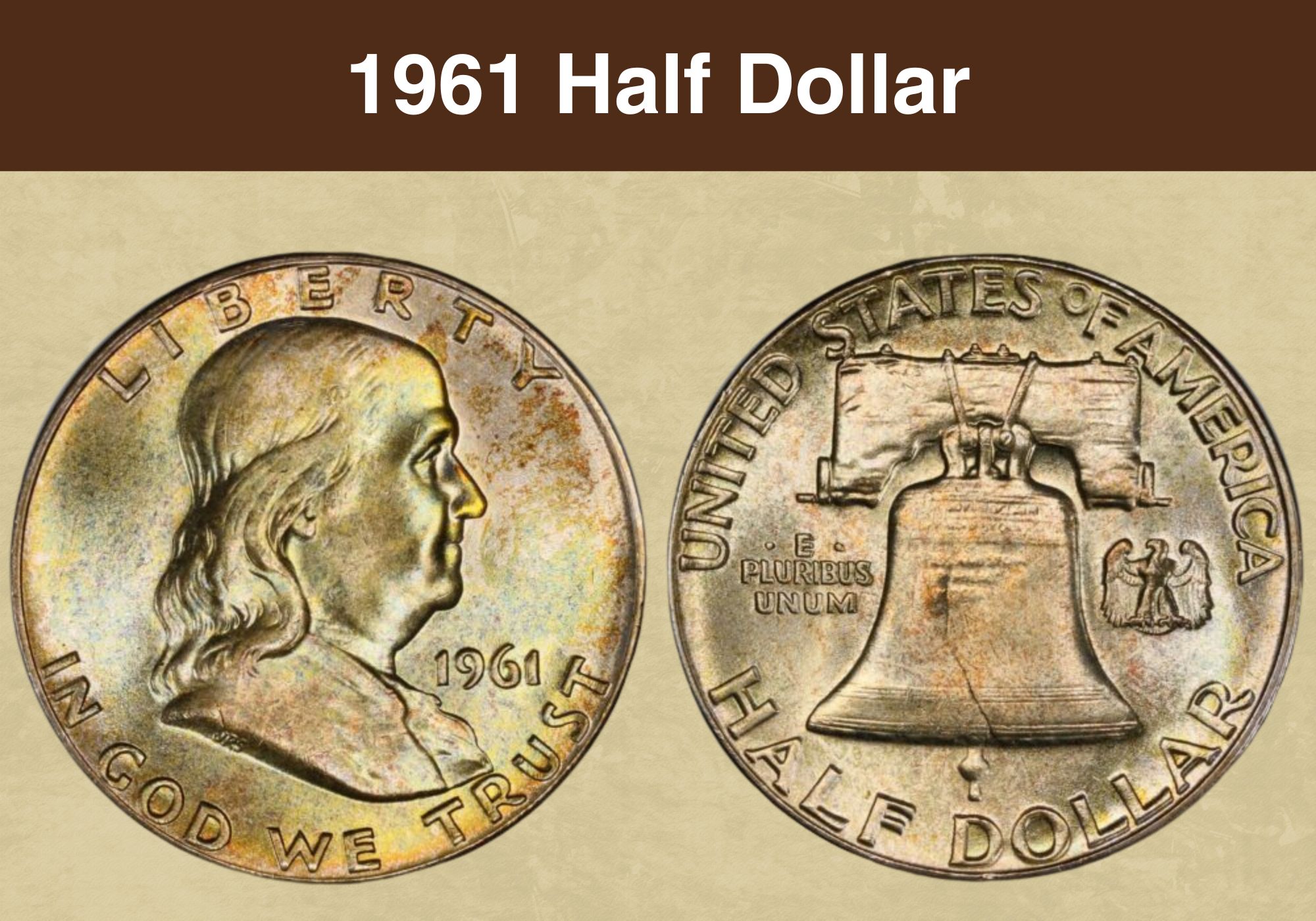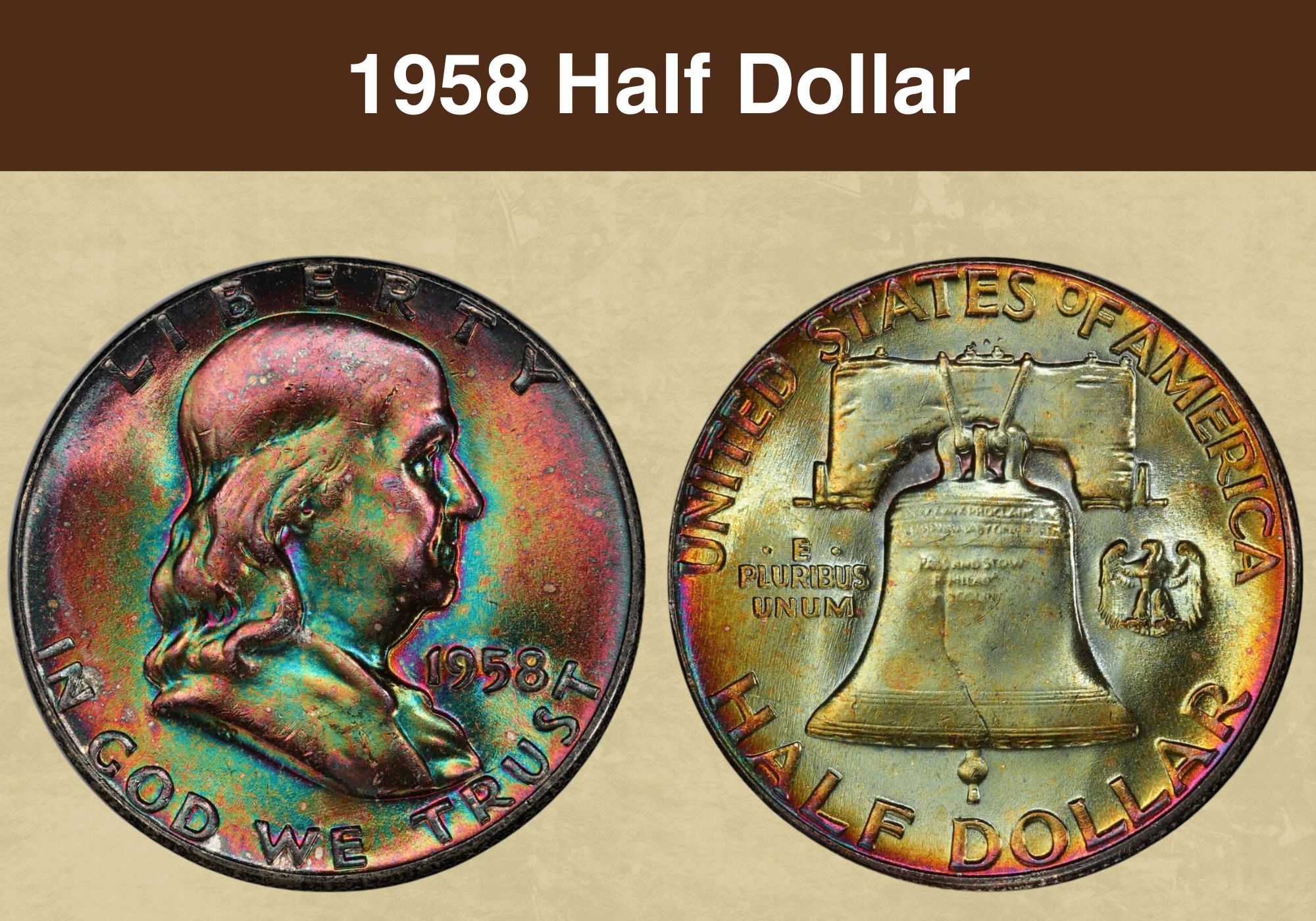
Coin Value Contents Table
The half dollar holds a curious place in the history of US currency. It has never been popular as pocket change for everyday Americans, but collectors still love them. This includes the 1958 Half Dollar.
This silver dollar isn’t used in circulation today, but how much is it worth? Here we’ll look in detail at the varieties of these coins, how much they are worth, and any common errors they may have. All you need to do is read on to find out more!
1958 Half Dollar Value Chart
| Coin Grade | MS/PR60 | MS63/PR66 | MS65/PR67 | MS67/PR68 |
| 1958 No Mint Mark Half Dollar | $5 | $26 | $50 | $375 |
| 1958 D Half Dollar | $5 | $26 | $40 | $500 |
| 1958 No Mint Mark Proof Half Dollar | $10 | $22 | $40 | $65 |
1958 Half Dollar Grading
The grading of coins is fairly simple once you know what the numbers and letters mean. The numbers are on a scale from 1 to 70, with 70 being a perfect example of a coin with no blemishes, wear, or damage.
The letters are either ‘MS’ or ‘PR.’ The first letter stands for Mint State and is for coins that were meant for circulation. The second is Proof. These coins were never intended for circulation and were instead meant for collectors, or to be archived.
| # | Grade |
|---|---|
| 1 | Basal State-1 |
| 2 | Fair |
| 3 | Very Fair |
| 4, 5, 6 | Good |
| 7, 8, 10 | Very Good |
| 12, 15 | Fine |
| 20, 30 | Very Fine |
| 40 | Extremely Fine |
| 50 | About Uncirculated |
| 60 | Mint State |
| 65 | Mint State |
| 70 | Mint State |
Please check our grading guides to know your coin scale, It’s the necessary step to know the exact value of your coin.
Check out now: How to Grade Franklin Half Dollar?
1958 Half Dollar Value by Mink Mark
The beautiful 1958 Half Dollar is a part of the Franklin Half Dollars series. These are coins that have the depiction of Benjamin Franklin on the obverse, who is one of the Founding Fathers of the United States. Chief engraver John R. Sinnock designed the coin, and it was put into circulation in 1948.
However, the series didn’t have a long run. It was only minted for 15 years, which was due to the death of John F. Kennedy. Following his death, the mint wanted to pay tribute, and Kennedy Half Dollars were made, which are still in use today.
The 1958 Half Dollar was minted in just two locations, Philadelphia, and Denver, with the former also responsible for the proof coins. Let’s take a look at those varieties in more detail.
Also read: 13 Most Valuable Kennedy Half Dollar Worth Money
1958 No Mint Mark Half Dollar Value
Philadelphia is the United States’ oldest and most historic mint. They have often been responsible for producing the most coins in any given year, but that wasn’t the case in 1958, with Denver making by far the most half dollars.
There were a few reasons for this, one of them being due to economic decline. With this, the mint only made 4,042,000 half dollars. This low mintage has led to a scarcity of coins at the higher grading levels.
While it was a low mintage in the context of coinage, four million is still a large number! Due to this, coins in worn condition will only be worth their melt value. It’s worth noting that we mentioned melt value there, and not face value.
The reason for that is the 1958 Half Dollar’s melt value is much higher than its $0.50 face value due to its 90% silver content. There is just under 0.2 of an ounce of silver in a 1958 Half Dollar, which with today’s price of silver, means it’s worth just shy of $5.
So, if you have a half dollar from 1958 in any condition, then make sure you don’t spend it! In 1965 the silver content of half dollars was reduced to 40% and then removed completely in 1970 in favor of a nickel/copper alloy.
You may now be wondering what condition a 1958 Half Dollar needs to be in for it to be above its melt value. The answer is that it would need to be at least at the lower levels of mint state at around MS62 or MS63.
The value of these coins will also be determined by how clear the detailing is. More accurately, whether there are complete and prominent lines on the Liberty Bell. Coins that have this are fine detail given the designation of ‘FBL,’ which stands for ‘Full Bell Lines.’
For clarity, there will be some MS66 coins with full bell lines, and some without. The ones with them will be much more valuable. We see this with the auction record, which was an incredible $129,250 for an MS67 coin. This not only had FBL, but it also had beautiful coloring.
It’s worth noting the record price stated there is exceptionally high, as the second-highest sale price was $47,000. If you have an MS67 coin, then you can expect it to sell for between $500 to $2,000. But if it has full lines and rainbow coloring, it may be much more valuable.
1958 D Half Dollar Value
We mentioned the coloring there, and you may be slightly confused considering these are silver coins. What happens is that silver can oxidize over time and can also come into contact with chemicals that change its color.
Often this change of color isn’t very attractive, as the coin will often start to brown. Other times, a wide range of colors will form. This can give the coin a visual appeal that is far above standard half dollar coins.
When you add all of these factors together, the most valuable coins will be ones that have a stunning combination of beautiful coloring, full bell lines, and a high grade. One such D coin sold in 2020 for $32,900.
These are called ‘D’ coins, as that is the mint mark stamped on the coin, showing that it was made in Denver. The mint mark is located above the bell, just under the ‘E’ in ‘STATES.’ In 1958, their mint made 23,962,412 half dollars, which is far above the number made in Philadelphia.
At an MS67 grade, you can expect to sell these coins for around $1,500, but that will jump up to around $3,000 for those with full bell lines. If you had an MS65 coin with FBL and beautiful coloring, then this could also easily be worth over $1,000.
Due to all of these factors, getting accurate estimates of the value of coins can be tough. However, if you have a colorful coin in great condition with sharp details, you could be holding something highly valuable.
1958 No Mint Mark Proof Half Dollar Value
Proof coins are mainly made for collectors and are meant to be perfect examples of coins with a bright luster and a mirror-like finish. Due to this, it’s expected that they have higher grades than regular business strike coins. You can find a lot of proof coins in grades PR68, with some PR69.
875,652 of these coins were made in 1958. At a grade of PR60, you can only expect to receive a maximum of $10 for them. At a grade of PR67, that jumps to around $750 and will be even higher for PR68 coins.
There are plenty of these which have been sold for well over $5,000. The record sale price for the 1958 No Mint Mark Proof Half Dollar is $32,900, which was a PR68 coin sold in 2017, matching the highest sale price of the Denver coin. That seems unusually high, but it was a beautiful example with a deep cameo.
The cameo of a proof coin is the contrast difference between the details on the face of the coin and the flat surface (called a field). If you have a mirror-like shine on the field along with frosted raised details, then this can significantly add to the value of the coin.
This cameo isn’t present on all proof coins, as it features more prominently on the first coins that are struck. There are two levels of detail here which are cameo for coins that show a significant contrast, and a deep cameo for coins that have an even stronger contrast.
Also read: 13 Most Valuable Franklin Half Dollars Worth Money
Rare 1958 Half Dollar Error List
When you are producing many millions of coins, there are bound to be a few errors, and the 1958 Half Dollar is no different. We’ve found five significant errors on these coins, so let’s check out what they are.
1. Repunched Mintmark
This error happens the mintmark on the coin is struck twice, with the second time being slightly off-center from the first. This is often minor and barely noticeable, whereas other times, it can be a little more obvious.
The repunched mintmark only happened on the ‘D’ coins in 1958, as they were the only ones that weren’t produced in Philadelphia.
2. Curved Clip
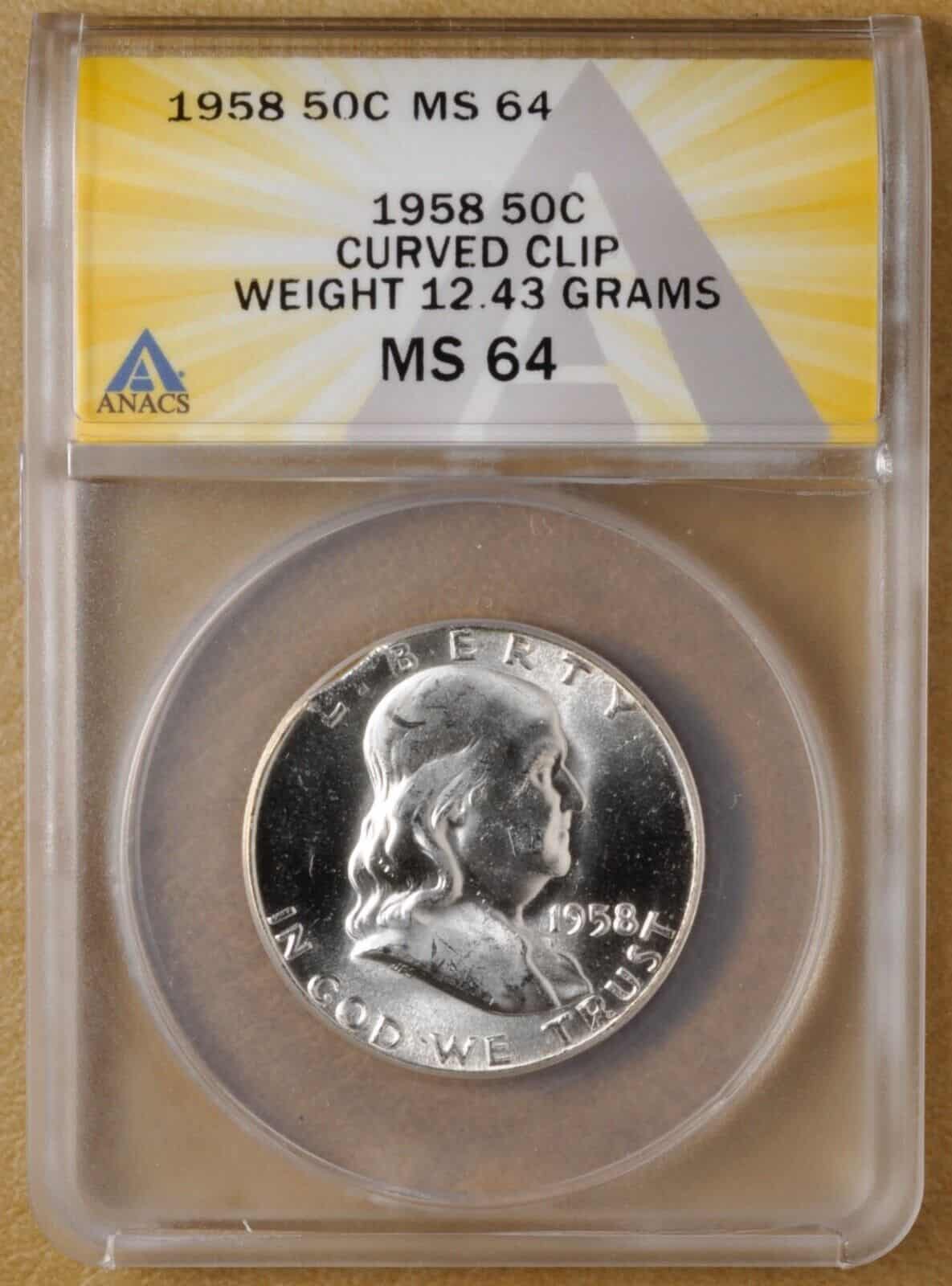
A curved clip is when a coin doesn’t get out from the die quickly enough and ends up being perforated by the die. This results in the coin having a small, curved chunk cut out of it. The curved clip on most 1958 Half Dollars is minor.
If you have one of these coins, then it’s likely to be worth at least $60. However, this may increase with a more severe clip to over $200.
3. Partial Collar
The collar holds a coin in place as it’s due to be struck, but sometimes it isn’t aligned properly. When this happens, you often get a full rim only on one side of the coin.
These errors can be quite valuable and are usually worth $200 to $300. With regular coin collecting, you’ll want coins in perfect condition. However, with error coins, the worse the error is, the more valuable it will be.
4. Flawed Planchet
The planchet is the name used for the metal disk that becomes a coin. Sometimes these disks can lack structural integrity or form an issue in the manufacturing process. When the planchet is struck, this can form a variety of errors, such as holes or cracks.
Usually, these coin defects are minor, but even with minor damage, one of these coins can be worth over $50.
Also read: 11 Most Valuable Half Dollars In Circulation
Where to Sell Your 1958 Half Dollar ?
Now that you know the value of your coins, do you know where to sell those coins online easily? Don’t worry, I’ve compiled a list of these sites, including their introduction, pros, and cons.
Check out now: Best Places To Sell Coins Online (Pros & Cons)
1958 Half Dollar – FAQs
1. Are 1958 half dollars silver?
Up until 1965, all half dollars were made from 90% silver. The remaining 10% of the coin is made from copper. The move away from silver was due to the rising price of the precious metal, which began to outvalue the coin.
Due to this, people started hoarding the coins as they were worth more than their face value. The silver content dropped to 40% from 1965 to 1970 before being removed completely in favor of a composition of 75% copper and 25% nickel.
2. How can you tell if a half dollar is rare?
Regardless of the year, a rare coin needs to be one that is in near-perfect condition. Even with coins such as the 1958 Half Dollar which are over 60 years old, there is still a plentiful supply in worn condition.
That being said, older coins in mint condition (for example MS67) are generally rarer than modern coins, as they have had more time to wear, and they were made in lower quantities. Simply put, if you have a half dollar in perfect condition, it will be rare.
The exception to this is error coins. If you think that there is something wrong with the coin, then it’s worth getting it checked out to see if it has an authenticated rare error.
3. What year half dollars are worth keeping?
Every year! Many coin collectors aim to complete their sets by collecting every variety of coins from every year. The 1958 Half Dollar is a great introductory coin for this, as the Franklin Half Dollar series lasted for only 15 years. Due to this, it’s not very expensive or difficult to collect the full set.
If you want a valuable coin, then it will need to be in perfect condition, and the older, the better. Also, any Half Dollar minted before 1965 will be worth at least its weight in silver.

